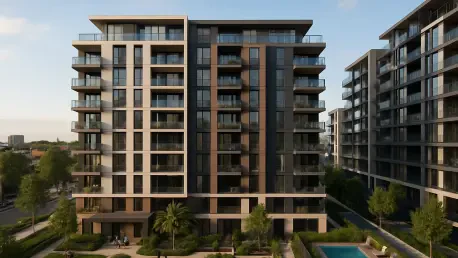In the heart of Australia’s urban centers, where housing demand continues to outstrip supply, the Build to Rent (BTR) model has emerged as a vital strategy to address the nation’s deepening housing crisis. This innovative approach, which focuses on constructing properties specifically for long-term rental rather than sale, promises to deliver stable, professionally managed accommodations for a growing population of renters. As rental demand reaches unprecedented levels, both federal and state governments have introduced a wave of tax concessions and policy reforms since mid-2024 to stimulate investment in this sector. These measures aim to create a win-win scenario, offering financial incentives to developers and investors while ensuring public benefits such as affordability and tenant security. However, the complexity of navigating these new regulations, with their stringent compliance requirements, can be daunting. This article provides a detailed exploration of the latest updates, breaking down the federal and state-level changes, compliance challenges, and practical strategies for investors. By shedding light on these developments, the goal is to equip stakeholders with the knowledge needed to capitalize on opportunities while adhering to the evolving legal framework.
Federal Reforms Shaping the BTR Landscape
The federal government has taken significant steps to bolster the attractiveness of BTR projects through legislative changes rolled out in late 2024. A cornerstone of these reforms is the establishment of a 15% concessional Managed Investment Trust (MIT) withholding rate, now clearly extended to include capital gains. This adjustment provides much-needed certainty for investors crafting long-term exit strategies, as it ensures predictable tax treatment on profits. Furthermore, the minimum lease term required to qualify for this rate has been lengthened from three to five years, reflecting a deliberate push toward fostering greater rental stability. This change underscores a broader policy intent to prioritize tenant security, ensuring that BTR developments contribute meaningfully to solving housing shortages by offering longer-term rental options in high-demand areas.
Beyond the MIT rate, another critical federal incentive is the confirmation of a 4% annual capital works deduction, designed to ease the financial burden of escalating construction and financing costs. This deduction offers immediate cash flow relief, a significant advantage in an environment of rising expenses. However, accessing this benefit comes with rigorous conditions, including a 15-year single-entity ownership requirement and a mandate that at least 10% of units be rented at no more than 74.9% of market rates. These affordability criteria ensure that BTR projects deliver tangible social benefits, but they also impose operational challenges. Investors must carefully balance the financial upside of the deduction against the complexities of maintaining compliance with these stringent rules, which also include professional management standards and potential tenant protection measures under consideration.
Compliance Hurdles at the Federal Level
Compliance remains a central pillar of accessing federal BTR incentives, and the associated regulations are notably strict. One of the most significant deterrents is the introduction of a misuse tax, set at 1.5% of a project’s value, which serves as a penalty for any breaches during the mandatory 15-year ownership period. This measure is intended to ensure adherence to affordability and ownership conditions, but it has raised concerns among investors about the risks of unintentional non-compliance. Following industry feedback, a small concession has been made, allowing the Commissioner of Taxation discretion to waive this penalty under exceptional circumstances. While this offers a degree of relief, it highlights the importance of meticulous planning and robust systems to avoid costly missteps that could jeopardize the financial viability of a project.
Another compliance challenge lies in the treatment of Goods and Services Tax (GST) for BTR properties, which are classified as input-taxed residential premises. This designation means that investors are unable to recover GST on construction inputs, adding a substantial cost factor that must be accounted for in project budgets. Unlike other commercial developments where GST recovery can offset expenses, BTR developers face this additional financial hurdle, necessitating careful cost management and strategic pricing of rental units. On a more positive note, foreign investors have seen barriers reduced through a dramatic cut in Foreign Investment Review Board (FIRB) application fees, now down to approximately $14,100 for a $50 million project from much higher previous levels. This change signals a welcoming stance toward international capital, enhancing the sector’s global appeal.
State-Specific Incentives and Their Variations
Across Australia, state governments are actively promoting the BTR sector with tailored incentives, though the diversity of policies creates a complex landscape for investors. Victoria, for example, has introduced a concessional 0.5% annual rate under its new Commercial & Industrial Property Tax (CIPT) regime, alongside exemptions from the Absentee Owner Surcharge and potential relief from the 8% Foreign Purchaser Additional Duty under certain conditions. These measures aim to make BTR projects more financially viable in a state grappling with acute housing shortages. However, they also come with specific compliance demands, such as ensuring that properties align with long-term rental goals, adding layers of administrative oversight that investors must navigate to secure these benefits.
In contrast, Western Australia has adopted a more accessible approach by setting a lower eligibility threshold of just 40 units for BTR projects, compared to the standard 50 units required in most other states. This policy adjustment opens the door to mid-sized developments, making the sector more inclusive for smaller investors or those targeting regional markets. Meanwhile, New South Wales (NSW) and Queensland offer competitive land tax concessions, though each state imposes unique compliance requirements. NSW stands out with the removal of a 2039 sunset clause on land tax benefits and the introduction of a $1 billion pre-sale guarantee scheme to support developers facing tight financing conditions. These state-level variations, while creating opportunities, also demand tailored strategies for investors operating across multiple jurisdictions to maximize incentives while staying compliant.
Regional Focus and Policy Innovations
Focusing on regional developments, NSW has prioritized the expansion of BTR projects in key urban hubs such as Sydney, Parramatta, and emerging areas like Penrith, with a strategic emphasis on transport corridors to support sustainable growth. Innovative reforms in the state include works-in-kind infrastructure agreements, allowing developers to contribute public amenities instead of paying monetary fees, thereby reducing upfront costs. Additionally, substantial funding has been allocated to streamline planning approvals, cutting through bureaucratic delays that often hinder project timelines. These initiatives reflect a broader commitment to not just increasing housing stock but ensuring that developments align with long-term urban planning goals, fostering communities that are both accessible and livable.
Victoria, on the other hand, is balancing incentives with stricter oversight, offering provisional determinations for CIPT eligibility to expedite access to concessional tax rates while tightening requirements for long-term rental offerings. Starting in 2026, BTR properties in the state must be genuinely available for rent for at least three years, preventing quick flips for profit and reinforcing the sector’s core purpose. Both NSW and Victoria are also investing in regulatory frameworks to maintain quality, with NSW allocating significant resources to enhance building inspections through the Building Commission. This focus on oversight aims to build trust in the sector, ensuring that BTR projects meet high standards of construction and tenant satisfaction, which are critical for sustained investor confidence and public support.
Practical Strategies for Investor Success
For investors looking to thrive in the BTR sector, proactive compliance is essential to unlocking the full range of federal and state incentives. At the federal level, early submission of opt-in registrations with the Australian Taxation Office is a critical step, alongside implementing robust systems for annual tracking of affordability metrics, lease structures, and ownership continuity. These measures help mitigate the risk of penalties like the misuse tax while ensuring eligibility for benefits such as the MIT withholding rate and capital works deductions. Given the complexity of federal rules, particularly around affordability mandates, investors are advised to integrate compliance into project planning from the outset, potentially engaging legal or tax experts to navigate the intricacies of reporting and ownership requirements.
At the state level, securing approvals early and establishing clear compliance frameworks are equally important, especially for portfolios spanning multiple jurisdictions where policies differ. For instance, aligning with Victoria’s long-term rental mandates or leveraging Western Australia’s lower unit threshold requires tailored approaches to project design and management. Investors should also prioritize building strong relationships with local authorities to stay ahead of regulatory changes and access state-specific incentives like land tax concessions or pre-sale guarantees in NSW. By adopting a strategic mindset and investing in compliance infrastructure, stakeholders can position themselves to not only meet legal obligations but also capitalize on the growing opportunities within Australia’s dynamic BTR market.
Looking Ahead to Future Opportunities
As the BTR sector continues to evolve, several emerging trends suggest that further policy refinements are on the horizon, offering both challenges and opportunities for investors. Government responsiveness to industry feedback has already led to expanded eligibility for federal incentives and clearer tax treatments, but unresolved issues such as potential GST reforms for residential inputs and adjustments to affordability definitions remain under discussion. If addressed, these changes could further enhance the financial appeal of BTR projects, reducing cost burdens and providing greater flexibility in meeting social mandates. Staying informed about these developments will be crucial for investors aiming to structure projects that align with future regulatory shifts.
State governments are also likely to intensify competition for BTR capital by rolling out additional incentives, creating a dynamic environment where regional policies could become even more diverse. This trend underscores the importance of adaptability, as investors may need to pivot strategies to take advantage of new concessions or navigate tighter compliance rules. Beyond immediate tax benefits, the broader outlook for BTR remains promising, with the model increasingly recognized as a cornerstone of Australia’s response to housing shortages. By maintaining vigilance and engaging with evolving policies, investors can play a pivotal role in shaping a sector that delivers both financial returns and meaningful social impact.
Reflecting on a Transformative Era for BTR
Looking back, the recent wave of reforms in Australia’s Build to Rent sector marked a turning point, with federal and state governments aligning substantial tax concessions with clear social objectives. The 15% MIT withholding rate and 4% capital works deduction stood out as powerful tools that drew significant investment, though they were accompanied by strict mandates on affordability and ownership that tested investor resolve. State-level innovations, from Victoria’s tightened rental terms to NSW’s pre-sale guarantees, added layers of opportunity and complexity that shaped regional markets. For those who navigated this landscape, the emphasis on compliance proved critical, as penalties loomed large for any missteps. Moving forward, the focus should shift to building on these foundations by advocating for streamlined GST treatments and clearer affordability guidelines, ensuring the sector remains attractive to capital while meeting housing needs. Investors are encouraged to deepen engagement with policymakers and invest in strategic planning tools to anticipate future shifts, positioning themselves as leaders in a market poised for sustained growth and impact.









